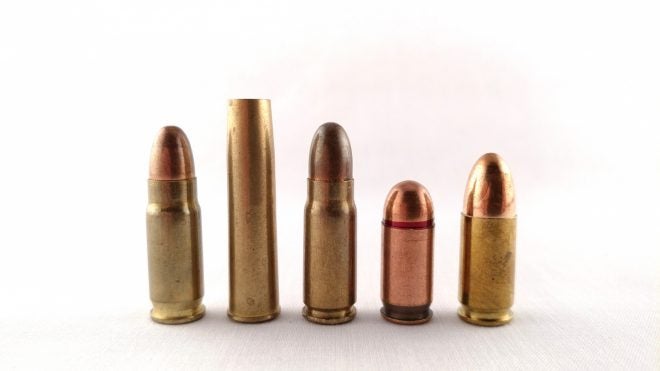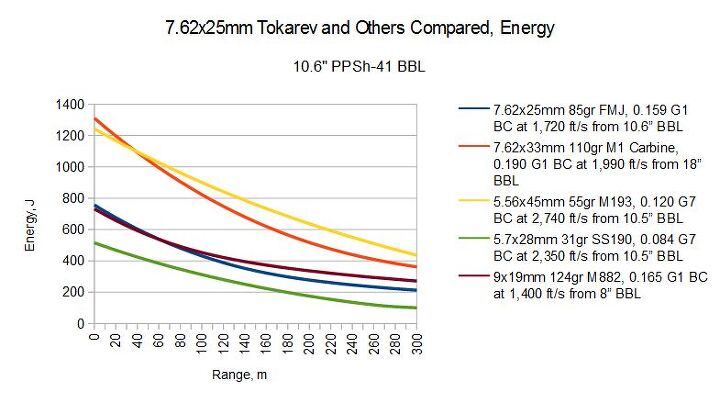Since we’ve discussed the .30 M1 Carbine caliber, it is probably only a matter of time before someone mentioned another .30 caliber round used by the Allies during the Second World War, that being the 7.62x25mm Tokarev. The round is a turbocharged derivative of the 7.63 Mauser, itself a hopped up variant of the very first successful rimless pistol cartridge, the 7.65 Borchardt. It was adopted in 1930 by the new Soviet Russian government for use with the Tokarev TT pistol, and later was also used in the PPD-40, PPSh-41, and PPS-43 submachine guns. Outside of Russia, it has been a popular cartridge as well, being used by the Vietnamese, Czechs, Yugoslavs, and most notably, the Chinese (with whom it remains in service today).
Mechanically, it is a low recoil round with good trajectory for a pistol cartridge, but possessing higher flash than optimal for handgun use. As a submachine gun round, however, it is difficult to dispute that the 7.62x25mm is the best of its breed for the period. Low per-round mass, low recoil, and a flat trajectory make the 7.62×25 a natural match for burpguns of the period, and many consider it to be the best round of its type from WWII for that reason.
How does it compare to its contemporaries and competitors, though? Let’s have a look:
The 7.62mm performs quite a bit better than the 9mm Parabellum, but considerably worse than the .30 Carbine; indeed it’s far to say it falls right in between the two.
The 7.62x25mm Tokarev is equivalent in mass to modern Russian 5.45x39mm ammunition, weighing about 10.6 grams per shot. That’s very good by the standards of the day (being roughly half the mass of the US’s .45 ACP!), but compared to modern SCHV weapons like the AKS-74U, it leaves something to be desired.
Ultimately, despite these somewhat dated ballistics the 7.62×25 still is a strong model for modern personal defense weapon calibers when provided with some modifications, as we’ll explore in a future installment.
 Your Privacy Choices
Your Privacy Choices



